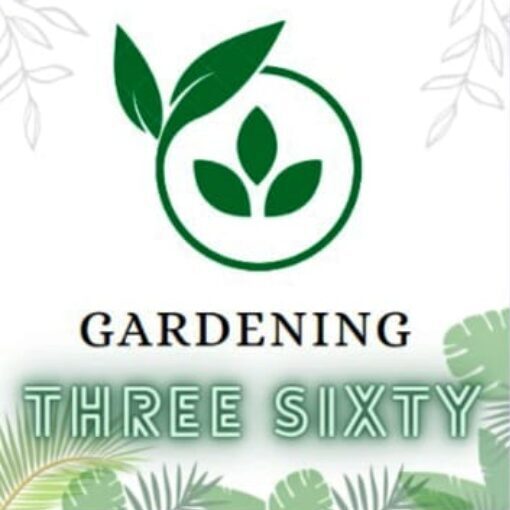Delphinium Pacific Giant, a perennial flower prized for its towering stature and vibrant blooms, is a captivating addition to gardens worldwide. This informative guide explores the fascinating world of Delphinium Pacific Giant.
Delving into its history, characteristics, cultivation methods, and more. Whether you’re a seasoned gardener or new to the world of perennials, this comprehensive resource will equip you with the knowledge to cultivate thriving Delphinium Pacific Giant plants and bring their majestic beauty to your landscape.
History and Origin of Delphinium Pacific Giant

The history of Delphinium Pacific Giant traces back to the majestic mountain ranges of the Pacific Northwest region of North America. Originally discovered in the wild, this stunning flower captivated botanists and garden enthusiasts with its remarkable beauty and resilience.
Delphinium Pacific Giant belongs to the Ranunculaceae family and is closely related to other members of the Delphinium genus. Its journey from the rugged wilderness to cultivated gardens worldwide is a testament to its enduring appeal and adaptability.
The Pacific Giant variety, known for its robust stature and vibrant hues, has its roots in the breeding efforts of horticulturists who sought to enhance its natural splendor. Through careful selection and hybridization, the Pacific Giant Delphinium emerged as a standout cultivar, revered for its striking presence and graceful blooms.
As gardeners continue to appreciate its beauty and versatility, the legacy of Delphinium Pacific Giant continues to flourish across continents, enriching landscapes with its timeless charm. This flower is getting very famous and appreciatable among the household.
Characteristics of Delphinium Pacific Giant
Delphinium Pacific Giant boasts several distinctive characteristics that set it apart as a garden favorite. Because of its following aspects, this flower is attractive to the garden.
Height
One of the most striking features of Delphinium Pacific Giant is its impressive height, with mature plants reaching towering heights of up to six feet or more. This vertical stature makes it a standout element in garden beds and borders, adding dimension and drama to the landscape.
Flower Shape
The flowers of Delphinium Pacific Giant are characterized by their classic spire-like shape, which lends an elegant and regal appearance to the plant. Each bloom is collected of a number of delicate petals arranged around a central spike, creating a visually captivating display.
Color Varieties of Delphinium Pacific Giant
Delphinium Pacific Giant is celebrated for its extensive range of captivating colors, including shades of blue, purple, pink, and white. Gardeners can select from a diverse palette of hues, allowing for endless creative possibilities in garden design.
From deep indigos reminiscent of the twilight sky to soft pastels evoking the gentle hues of dawn, the color diversity of Delphinium Pacific Giant ensures there is a shade to suit every aesthetic preference. This color variety of flowers is very beautiful.
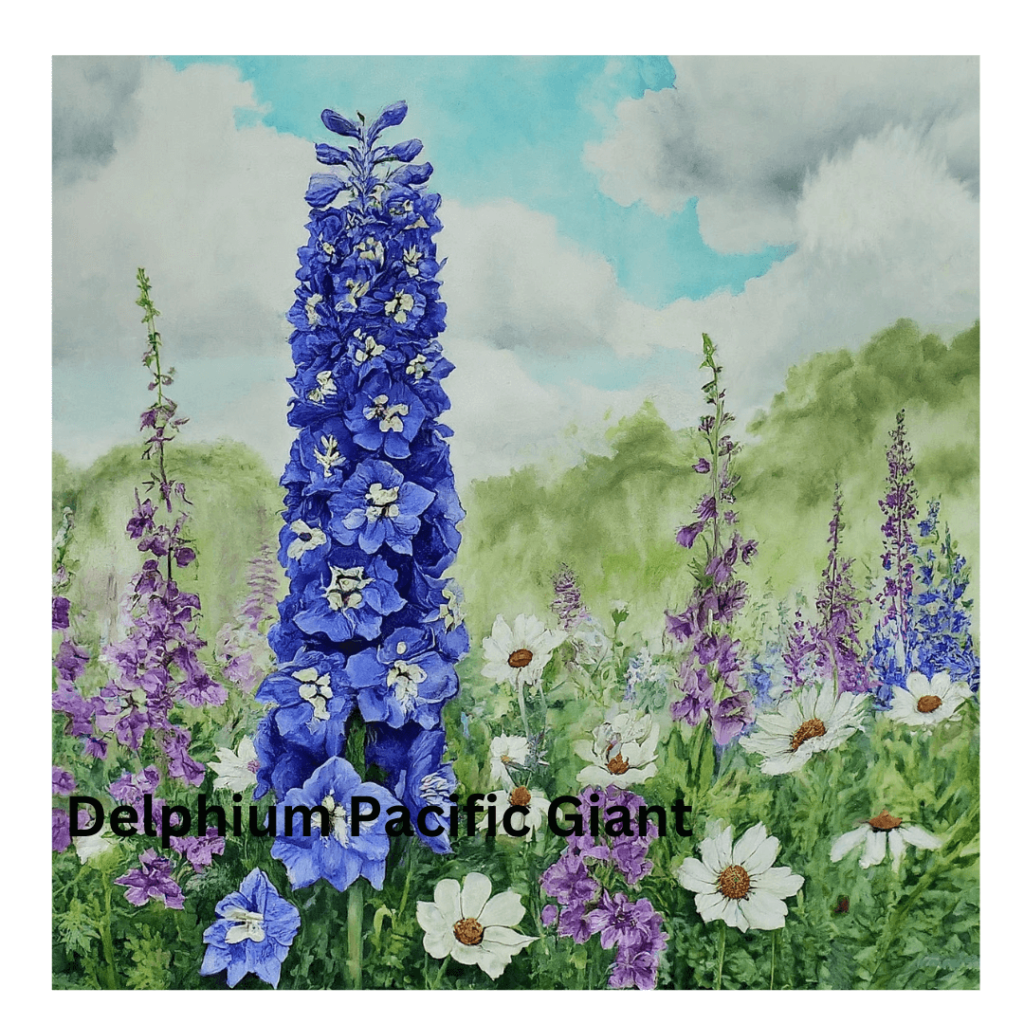
How to Grow Delphinium Pacific Giant
Growing Delphinium Pacific Giant requires careful attention to its specific needs to ensure optimal health and vibrant blooms.
Soil Requirements
Delphinium Pacific Giant thrives in well-drained, fertile soil with a slightly acidic to neutral pH level. Amend heavy clay soils with organic matter such as compost to improve drainage and nutrient retention. Avoid water-logged conditions, as excess moisture can lead to root rot and other issues.
Sunlight Needs
Adequate sunlight is essential for the healthy growth of the Delphinium Pacific Giant. Plant in a location that receives full to partial sun, with at least six hours of direct sunlight per day. In regions with hot summers, provide some afternoon shade to prevent scorching of the foliage.
Watering Schedule
Maintain consistent soil moisture levels to support the growth and development of Delphinium Pacific Giant. Water deeply and evenly, allowing the soil to dry out slightly between waterings. Avoid overhead watering to prevent foliar diseases, and water at the base of the plant to minimize moisture on the leaves.
Fertilization Tips
Fertilize Delphinium Pacific Giant with a balanced, slow-release fertilizer in early spring as new growth emerges. Follow the recommended dosage and application instructions provided by the manufacturer. Avoid over-fertilization, as excessive nitrogen can promote lush foliage at the expense of flower production.
By providing the proper growing conditions and attentive care, gardeners can enjoy the beauty of Delphinium Pacific Giant in their own landscapes.
Propagation Methods
Delphinium Pacific Giant can be propagated through various methods, offering gardeners flexibility in expanding their collection.
Seeds
One of the most common propagation methods for Delphinium Pacific Giant is through seeds. Start seeds indoors in late winter or early spring, using a well-draining seed starting mix. Sow seeds thinly on the surface of the soil and lightly press them into the medium. Keep the soil consistently moist and provide bottom heat to encourage germination. Once seedlings develop true leaves, transplant them into individual pots or trays. Harden off seedlings before planting them outdoors after the danger of frost has passed.
Division
Dividing mature Delphinium Pacific Giant plants is another effective way to propagate this stunning perennial. In early spring or late summer, carefully dig up established clumps of Delphinium Pacific Giant using a sharp garden spade. Gently tease apart the root mass into smaller sections, ensuring each division has several healthy shoots and root systems. Replant divisions in prepared soil and water thoroughly to settle the roots.
Propagation allows gardeners to propagate Delphinium Pacific Giant and share its beauty with others while also rejuvenating established plants for continued vigor and vitality.
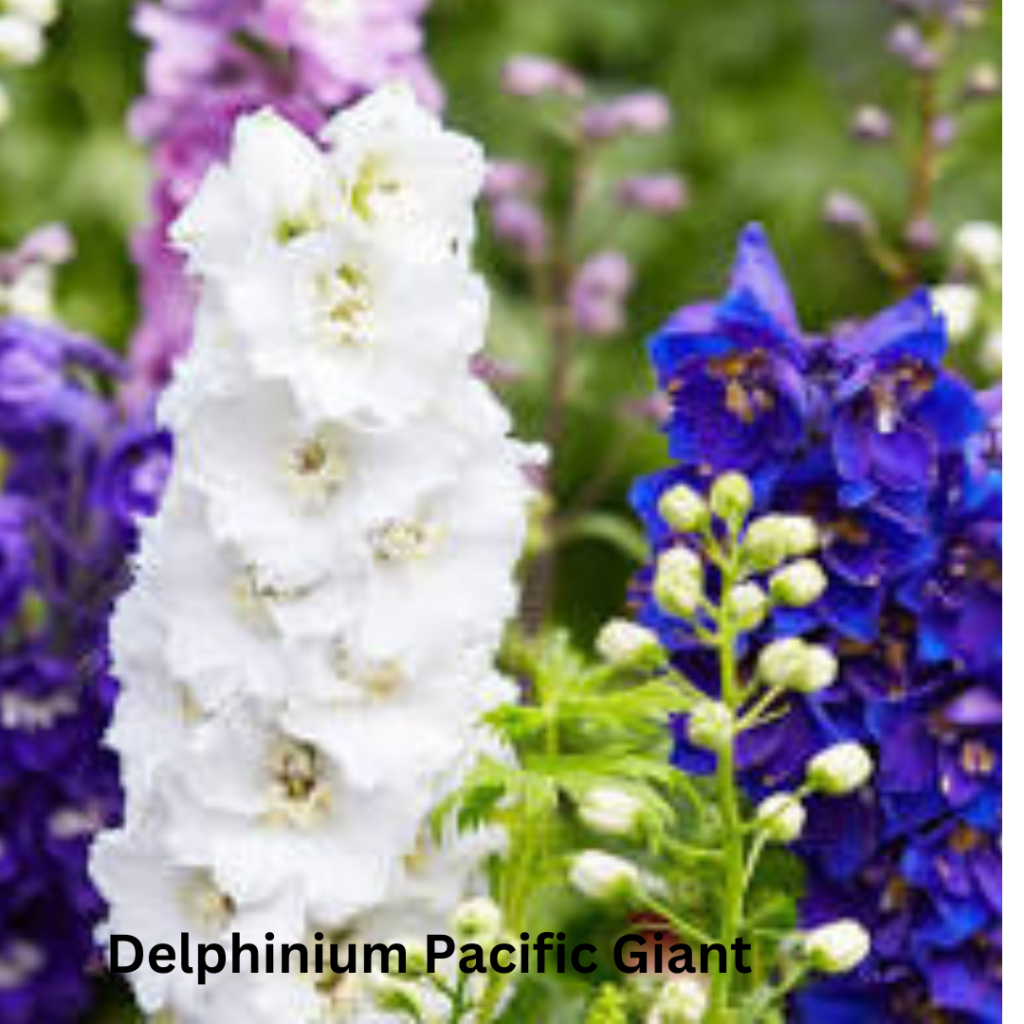
Common Pests and Diseases
Despite its stunning beauty, Delphinium Pacific Giant is susceptible to certain pests and diseases that can affect its health and appearance.
Pests
Common pests that may target Delphinium Pacific Giant include aphids, slugs, and snails. These pests feed on foliage and can cause damage to young plants and new growth. To control aphids, spray plants with a strong stream of water or use insecticidal soap as a natural remedy. Beer traps or copper barriers can help deter slugs and snails from feeding on tender foliage.
Diseases
Delphinium Pacific Giant is prone to fungal diseases such as powdery mildew and crown rot, especially in humid conditions or poorly drained soil. Powdery mildew appears as a white powdery coating on the leaves, while crown rot causes the base of the plant to become soft and mushy. To prevent fungal diseases, provide good air circulation around plants, avoid overhead watering, and remove infected plant material promptly. Applying fungicides labeled for use on Delphiniums can help control fungal infections.
By monitoring for pests and diseases and implementing appropriate preventive measures, gardeners can help ensure the health and vitality of their Delphinium Pacific Giant plants.
Is Delphinium Pacific Giant Allergic?
Delphinium Pacific Giant is not typically known to cause allergic reactions in humans. However, individuals with sensitive skin or respiratory conditions may experience irritation when handling or coming into contact with the plant’s foliage or sap.
While the risk of allergic reactions to Delphinium Pacific Giant is minimal, it’s always advisable to wear gloves when handling plants, especially if you have known allergies or sensitivities. Additionally, avoid rubbing your eyes or touching your face after handling Delphinium Pacific Giant to prevent potential irritation.
Gardeners can enjoy the beauty of Delphinium Pacific Giant with peace of mind, knowing that it is generally considered safe for most individuals.
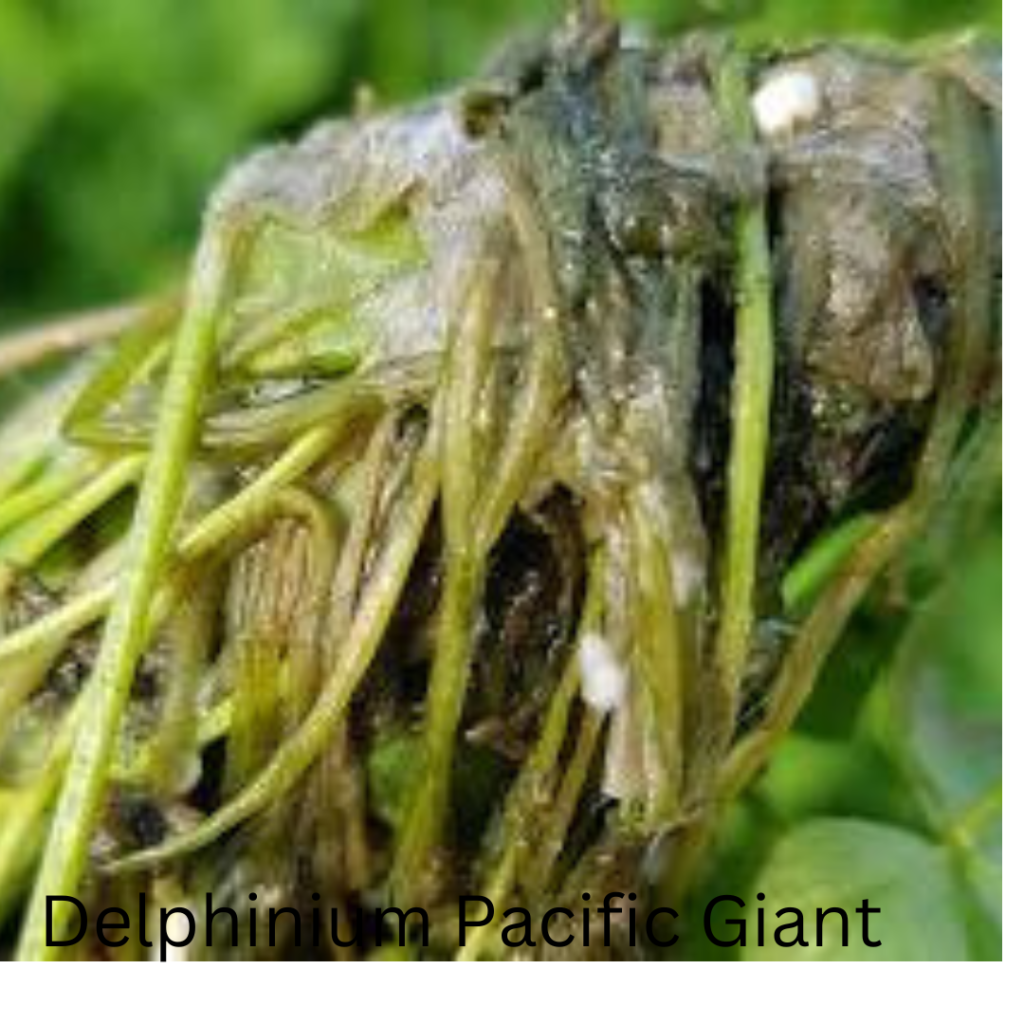
Uses in Garden Landscaping
Delphinium Pacific Giant is prized for its versatility and ornamental value in garden landscaping.
Border Plantings
The towering spikes of Delphinium Pacific Giant make it an excellent choice for border plantings, where its majestic presence can serve as a backdrop for shorter annuals and perennials. Plant in groups or drifts along garden borders to create a striking visual impact and add vertical interest to the landscape.
Cut Flower Arrangements
The long stems and abundant blooms of Delphinium Pacific Giant make it an ideal choice for cut flower arrangements. Harvest stems when the lower buds begin to open but before the flowers are fully mature. Display in tall vases or mixed bouquets to showcase the beauty of the blooms indoors.
Cottage Gardens
Delphinium Pacific Giant lends itself well to cottage garden themes, where its old-fashioned charm and cottage garden themes, where its old-fashioned charm and vibrant colors can complement other traditional favorites such as roses, peonies, and foxgloves. Integrate Delphinium Pacific Giant into mixed borders or informal garden beds for a romantic and nostalgic feel.
Pollinator Gardens
The nectar-rich flowers of Delphinium Pacific Giant attract a variety of pollinators, including bees, butterflies, and hummingbirds. Incorporate these plants into pollinator gardens to support local pollinator populations and encourage biodiversity in the landscape.
From formal garden designs to whimsical cottage landscapes, Delphinium Pacific Giant offers endless possibilities for creative expression and garden enjoyment.
Popular Varieties of Delphinium Pacific Giant
Delphinium Pacific Giant encompasses a wide range of popular varieties, each offering unique colors and characteristics to suit different garden preferences.
Blue Bird
This variety features stunning deep blue blooms with contrasting white centers, reminiscent of a clear summer sky. ‘Blue Bird’ is prized for its intense color saturation and vigorous growth habit, making it a standout choice in garden borders and cottage gardens.
Black Knight
‘Black Knight’ is celebrated for its dramatic, velvety dark purple blooms that add depth and richness to garden landscapes. The striking contrast against lush green foliage makes ‘Black Knight’ a captivating focal point in any garden setting.
King Arthur
‘King Arthur’ showcases regal spikes of vibrant blue-purple blooms accented by white centers, evoking the legendary aura of its namesake. This variety is known for its sturdy stems and long-lasting flowers, making it a favorite among gardeners and florists alike.
Galahad
‘Galahad’ stands out with its pure white blooms that radiate elegance and sophistication in the garden. The pristine flowers of ‘Galahad’ make it an ideal choice for bridal bouquets, formal gardens, and moonlit garden settings.
Summer Skies
‘Summer Skies’ captivates with its soft pastel hues of lavender blue, reminiscent of a tranquil summer afternoon. This variety adds a touch of serenity and charm to garden borders, container plantings, and cutting gardens.
With such a diverse array of varieties to choose from, gardeners can select the perfect Delphinium Pacific Giant to complement their garden style and color palette.
Tips for Success Growing Delphinium Pacific Giant
Achieving success with Delphinium Pacific Giant requires attention to detail and adherence to proper growing practices. Here are some tips to help ensure robust growth and abundant blooms:
- Provide Adequate Support: Delphinium Pacific Giant’s tall stems may require support to prevent them from bending or breaking, especially in windy conditions. Use stakes or trellises to support plants and keep them upright throughout the growing season.
- Deadhead Spent Flowers: Remove spent flowers regularly to encourage continuous blooming and prevent the plant from expending energy on seed production. Deadheading also helps maintain a neat appearance in the garden.
- Monitor Soil Moisture: Keep the soil consistently moist but not waterlogged to support healthy root development and flowering. Mulching around plants helps retain soil moisture and suppress weeds.
- Prune Foliage Sparingly: While it’s essential to remove dead or diseased foliage, avoid excessive pruning, which can stress the plant and reduce flowering. Trim back stems to the base after flowering to encourage new growth and prevent self-seeding.
- Divide Established Clumps: Every few years, divide overcrowded clumps of Delphinium Pacific Giant to rejuvenate plants and prevent them from becoming too congested. Divide in early spring or late summer when plants are dormant for best results.
The Gift of Companionship – Pairing Your Delphinium with Other Plants
Delphinium Pacific Giant harmonizes beautifully with a variety of companion plants, enhancing the overall aesthetic and ecological balance of the garden.
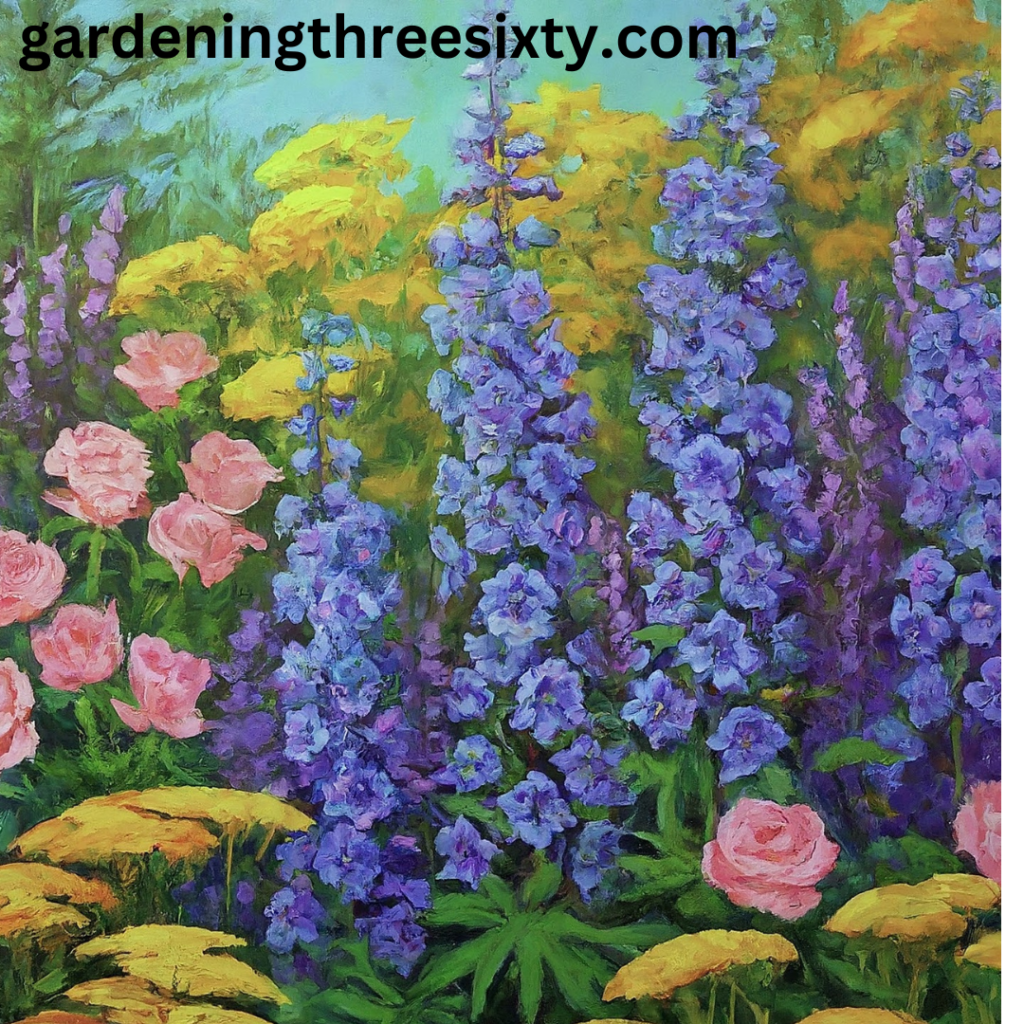
Lavender (Lavandula spp)
The fragrant blooms and silvery foliage of lavender provide a delightful contrast to the bold spikes of Delphinium Pacific Giant. Plant lavender alongside Delphiniums to create a sensory oasis and attract pollinators to the garden.
Roses (Rosa spp)
Roses and Delphiniums make a classic pairing in garden landscapes, combining the elegance of roses with the vertical drama of Delphinium spikes. Choose rose varieties with complementary colors to create stunning floral compositions and add romance to the garden.
Salvia (Salvia spp)
Salvias are prized for their long-lasting blooms and vibrant colors, making them ideal companions for Delphinium Pacific Giant. Plant salvias in front of Delphiniums to provide a lower layer of interest and create visual depth in garden borders.
Echinacea (Echinacea spp)
The cheerful blooms of echinacea add a pop of color and texture to garden beds, complementing the graceful form of Delphinium Pacific Giant. Choose echinacea varieties in shades of pink, purple, or white to create a harmonious color scheme with Delphiniums.
Foxgloves (Digitalis spp)
Foxgloves share a similar vertical growth habit and architectural presence with Delphinium Pacific Giant, making them natural companions in cottage garden settings. Plant foxgloves interspersed among Delphiniums to create a whimsical and enchanting atmosphere.
By carefully selecting companion plants that complement the stature and color palette of Delphinium Pacific Giant, gardeners can create captivating landscapes that celebrate the beauty of nature.
The Gift of Companionship: Pairing Your Delphinium with Other Plants
Delphinium Pacific Giant harmonizes beautifully with a variety of companion plants, enhancing the overall aesthetic and ecological balance of the garden.
Lavender (Lavandula spp)
The fragrant blooms and silvery foliage of lavender provide a delightful contrast to the bold spikes of Delphinium Pacific Giant. Plant lavender alongside Delphiniums to create a sensory oasis and attract pollinators to the garden.
Roses (Rosa spp)
Roses and Delphiniums make a classic pairing in garden landscapes, combining the elegance of roses with the vertical drama of Delphinium spikes. Choose rose varieties with complementary colors to create stunning floral compositions and add romance to the garden.
Salvia (Salvia spp)
Salvias are prized for their long-lasting blooms and vibrant colors, making them ideal companions for Delphinium Pacific Giant. Plant salvias in front of Delphiniums to provide a lower layer of interest and create visual depth in garden borders.
Echinacea (Echinacea spp)
The cheerful blooms of echinacea add a pop of color and texture to garden beds, complementing the graceful form of Delphinium Pacific Giant. Choose echinacea varieties in shades of pink, purple, or white to create a harmonious color scheme with Delphiniums.
Foxgloves (Digitalis spp)
Foxgloves share a similar vertical growth habit and architectural presence with Delphinium Pacific Giant, making them natural companions in cottage garden settings. Plant foxgloves interspersed among Delphiniums to create a whimsical and enchanting atmosphere.
By carefully selecting companion plants that complement the stature and color palette of Delphinium Pacific Giant, gardeners can create captivating landscapes that celebrate the beauty of nature.
Local Nurseries and Garden Centers for Delphinium Pacific Giant
Visit your local nurseries and garden centers to explore their selection of Delphinium Pacific Giant varieties. These establishments often carry a diverse range of plants suited to local growing conditions and can provide valuable advice on plant care and maintenance.
Online Retailers
Many online retailers offer a wide assortment of Delphinium Pacific Giant plants and seeds for purchase. Browse reputable websites specializing in perennial plants and gardening supplies to find the specific varieties you desire. Read customer reviews and ratings to ensure quality and customer satisfaction before making a purchase.
Specialty Perennial Nurseries
Consider sourcing Delphinium Pacific Giant plants from specialty perennial nurseries that focus on rare and unusual cultivars. These nurseries often carry exclusive varieties and provide expert guidance on cultivation and propagation techniques.
Seed Exchanges and Gardening Clubs
Joining seed exchanges or gardening clubs can be an excellent way to obtain Delphinium Pacific Giant seeds and plants while connecting with fellow gardening enthusiasts. Participate in seed swaps and plant exchanges to expand your collection and discover new varieties.
Whether you prefer to shop locally or explore online options, there are plenty of avenues to acquire Delphinium Pacific Giant plants and seeds to enhance your garden landscape.
FAQs (Frequently Asked Questions)
How big do Pacific giant delphiniums get?
Pacific giant delphiniums are known for their towering stature and impressive blooms. They can reach a mature height of anywhere between 3 to 7 feet (1 to 2.1 meters) tall, with some sources even reporting heights of up to 8 feet (2.4 meters). Their flower spikes themselves are adorned with large, beautiful flowers that can be up to 3 inches (8 centimeters) in diameter.
Where is the best place to plant delphiniums?
The best place to plant your delphiniums will depend on a few factors, but ideally, it should provide sun, shelter, moisture, light, and soil, etc.
Do delphiniums like sun or shade?
Delphiniums prefer the sun with a caveat. They need at least 6-8 hours of sunlight daily for optimal growth and flowering. However, in hot climates, some afternoon shade for their roots can be beneficial.
How is delphinium poisonous?
Delphiniums are poisonous due to the presence of diterpenoid alkaloids throughout the plant. These alkaloids are concentrated in all parts of the delphinium, including the roots, stems, leaves, flowers, and seeds. For more details https://insteading.com/blog/delphinium-flowers
What is delphinium good for?
Delphiniums are a magnet for pollinators like butterflies, bees, and hummingbirds, thanks to their nectar-rich flowers and vibrant colors. This can be beneficial for your garden’s ecosystem by encouraging these helpful insects.
Conclusion
Delphinium Pacific Giant, with its towering spires of vibrant blooms and graceful presence, stands as a symbol of beauty and elegance in the garden landscape. From its rich history and diverse varieties to its cultivation and companionship with other plants, Delphinium Pacific Giant captivates the hearts of gardeners worldwide.
By understanding its unique characteristics and providing attentive care, gardeners can cultivate thriving displays of Delphinium Pacific Giant, enriching their outdoor spaces with color, fragrance, and vitality. Whether adorning garden borders, brightening cut flower arrangements, or attracting pollinators to the landscape, Delphinium Pacific Giant remains a cherished addition to gardens of all styles and sizes.
As we embrace the beauty and wonder of Delphinium Pacific Giant, let us continue to nurture and celebrate its presence in our gardens, inspiring generations to come with its timeless charm and allure.
ALSO READ
- Mexican Herbs– Spices For Healthy Life
- Trees with Yellow Leaves
